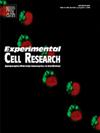METTL14-mediated m6A methylation regulates pathological retinal neovascularization by targeting autophagy
IF 3.3
3区 生物学
Q3 CELL BIOLOGY
引用次数: 0
Abstract
Pathological retinal neovascularization (RNV) is a prevalent characteristic of various ocular diseases, including proliferative diabetic retinopathy (PDR), retinopathy of prematurity (ROP), and retinal vein occlusion (RVO). While the importance of N6-methyladenosine (m6A) modification in diverse disease contexts is well-established, its functional role in pathological RNV remains unclear. Herein, we investigated the involvement of m6A modification and its core methyltransferase, METTL14, in a model of oxygen-induced retinopathy (OIR) to elucidate their contribution to retinal angiogenesis. In this study, we observed heightened levels of m6A modification and elevated expression of METTL14 in the OIR model, suggesting their potential implication in pathological RNV. Employing targeted knockdown of METTL14, we revealed that its depletion activated autophagy flux in human retinal vascular endothelial cells (HRVECs), consequently inhibiting the angiogenic capacity of endothelial cells. Mechanistically, we demonstrated that METTL14 exerts its regulatory influence on autophagy flux by modulating the stability of ATG7, a pivotal protein involved in autophagy. Specifically, METTL14 knockdown led to increased ATG7 expression at both mRNA and protein levels, accompanied by reduced m6A methylation of ATG7 mRNA and enhanced mRNA stability. Moreover, silencing of ATG7 counteracted the effects of METTL14 knockdown on endothelial cell functions, emphasizing ATG7 as a downstream target of METTL14-mediated autophagy in HRVECs. After all, our findings provide valuable insights into the pathogenesis of retinal pathological angiogenesis and potential therapeutic targets for the treatment of ocular neovascular diseases.
METTL14 介导的 m6A 甲基化通过靶向自噬调节病理性视网膜新生血管。
病理性视网膜新生血管(RNV)是包括增殖性糖尿病视网膜病变(PDR)、早产儿视网膜病变(ROP)和视网膜静脉闭塞(RVO)在内的多种眼部疾病的普遍特征。虽然 N6-甲基腺苷(m6A)修饰在各种疾病中的重要性已得到证实,但其在病理性 RNV 中的功能作用仍不清楚。在此,我们研究了氧诱导视网膜病变(OIR)模型中 m6A 修饰及其核心甲基转移酶 METTL14 的参与情况,以阐明它们对视网膜血管生成的贡献。在这项研究中,我们观察到 OIR 模型中 m6A 修饰水平升高和 METTL14 表达升高,这表明它们可能与病理 RNV 有关。通过靶向敲除 METTL14,我们发现其消耗激活了人视网膜血管内皮细胞(HRVECs)的自噬通量,从而抑制了内皮细胞的血管生成能力。从机理上讲,我们证明了METTL14是通过调节参与自噬的关键蛋白ATG7的稳定性来对自噬通量施加调控影响的。具体来说,敲除 METTL14 会导致 ATG7 在 mRNA 和蛋白质水平上的表达增加,同时 ATG7 mRNA 的 m6A 甲基化减少,mRNA 的稳定性增强。此外,ATG7的沉默抵消了METTL14敲除对内皮细胞功能的影响,强调了ATG7是METTL14介导的HRVECs自噬的下游靶点。总之,我们的研究结果为了解视网膜病理性血管生成的发病机制以及治疗眼部新生血管疾病的潜在治疗靶点提供了宝贵的见解。
本文章由计算机程序翻译,如有差异,请以英文原文为准。
求助全文
约1分钟内获得全文
求助全文
来源期刊

Experimental cell research
医学-细胞生物学
CiteScore
7.20
自引率
0.00%
发文量
295
审稿时长
30 days
期刊介绍:
Our scope includes but is not limited to areas such as: Chromosome biology; Chromatin and epigenetics; DNA repair; Gene regulation; Nuclear import-export; RNA processing; Non-coding RNAs; Organelle biology; The cytoskeleton; Intracellular trafficking; Cell-cell and cell-matrix interactions; Cell motility and migration; Cell proliferation; Cellular differentiation; Signal transduction; Programmed cell death.
 求助内容:
求助内容: 应助结果提醒方式:
应助结果提醒方式:


